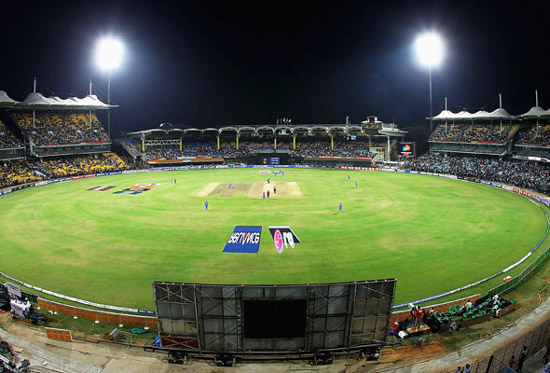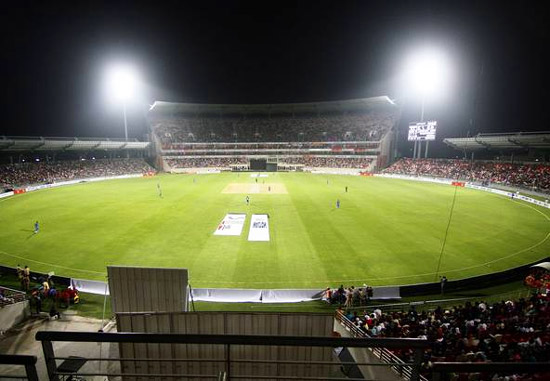Tennis Court Lights-Led Stadium light
Led Stadium Light ---Tennis Court Lights
When you are looking to install a tennis court on your property, or as part of an upgrade on rental or commercial properties, an integral part of the court will obviously be the equipment including rackets, balls, and of course the net. The court itself, whether an artificial turf, clay, or real grass, will likely have some fencing or other types of the surrounding enclosure to keep errant balls from being hit outside and damaging passing cars or buildings, or other property. As important as all these considerations are, what if you are a busy person who works all day, and only has time to play on your court in the evenings? You will want to consider lighting for your court, of course.
a. How to achieve better lighting for tennis court
When considering illuminating your tennis court, the proper lighting decisions can often seem intimidating to make. You may not know the structural supports, wattage, or even type of light bulb you will need. You will be walking into this in the dark, so to speak. The good thing is, you will be able to talk to an expert who installs tennis court lighting professionally. Online, you will likely find companies who do this close to your location, or at least within reasonable driving distance. You can either go to their offices or warehouses or have a knowledgeable expert come to you. In either case, they will have the right equipment and expertise to fit your needs, setting you up with the correct array of lights, their supports, and sufficient wattage to make your court bright enough for you to play those evening or late-night games.
b. Cost & installation
Once you know what sort of lighting packages are offered, those within your price range can be considered, and you can choose one to your liking. You can look for the aesthetics of each package that suits your taste and your court’s plan. Then, you can choose to install it yourself, having the hardware and fixtures delivered to your property. A better way to go, unless you have a lot of experience in electrical work, is to have a professional install the lighting in your tennis court. This way you are guaranteed a professional installation, and we will offer a warranty on their work if anything goes wrong within a set period of time. The peace of mind that comes with having a professional tennis court lighting specialist install the fixtures, supports, and of course the light bulbs will ensure you have the correct placements and wattage to make your games at night illuminated enough to see the ball!
The great exercise and benefits that come from having a tennis court on your property are lessened if you can’t play after work when it gets dark. You may find that when you are faced with choosing the lighting for this task, it is more than you think you can handle. Rest assured, by consulting with experts in the field you will be able to find the exact equipment you need so that you can play well into the evenings.
3. Cricket Field Lights
 Good and proper lighting is essential to the success of any sporting event. Irrespective of whether the sport is played outdoor or indoor, as a leisure activity or as a professional championship, in daylight or at night, the importance of proper lighting remains the same and can never be downplayed. And with the increasing demands of HD broadcasting, increasing audience and the need to play at night, the demands of proper lighting at cricket fields or venues have never been this high. So, what are some of the most important things to consider when lighting a cricket field?
Good and proper lighting is essential to the success of any sporting event. Irrespective of whether the sport is played outdoor or indoor, as a leisure activity or as a professional championship, in daylight or at night, the importance of proper lighting remains the same and can never be downplayed. And with the increasing demands of HD broadcasting, increasing audience and the need to play at night, the demands of proper lighting at cricket fields or venues have never been this high. So, what are some of the most important things to consider when lighting a cricket field?
a. Getting an evenly Spread Illumination
Getting a consistent level of evenly spread lighting across the playing field is very fundamental. In cricket, the objects of observation such as the ball and the puck move very fast in random directions and their angular sizes may vary greatly. For players, referees and of course, players to watch these movements as deserved, it’d only be possible if the field’s illumination is evenly spread across the entire playing field.
b. Level of Brightness
 Generally, a brightness level ranging between 250 and 350 lux would be enough for players and spectators in normal cricket games. However, this isn’t quite there when it comes to professional matches, which would need a brightness level ranging between 500 and 750 lux. The brightness level should be much higher, somewhere in the range of 1500 to 2500 lux, if the matches are to be broadcasted live.
Generally, a brightness level ranging between 250 and 350 lux would be enough for players and spectators in normal cricket games. However, this isn’t quite there when it comes to professional matches, which would need a brightness level ranging between 500 and 750 lux. The brightness level should be much higher, somewhere in the range of 1500 to 2500 lux, if the matches are to be broadcasted live.
Basically, the International Cricket Council (ICC) prioritizes safety not just of the players but of everyone involved. For this reason, sufficient brightness allows the players, the referees and the spectators to watch the movement of the ball even if it travels at extremely high speeds.
c. Lighting Design of a Cricket Field
While the ICC doesn’t offer standard specification for cricket field lighting, traditional cricket field lights have been designed on long poles or way up. This is because the ball can sometimes travel too high when hit and the high lights are vital in keeping the ball in sight for everyone involved. Another important thing to consider when designing lighting for cricket fields is to ensure that the players and the spectators aren’t in direct view of the light source.
To this end, there’s not a doubt that the correct level of brightness is of great importance when lighting a cricket field. However, the most important part of lighting a cricket field is to ensure a complete natural feel for the players, the spectators and everyone involved. In fact, it’s often advisable to use LED lights given that they’re energy efficient and can produce a lamp-color rendition that’s close to daylight!





